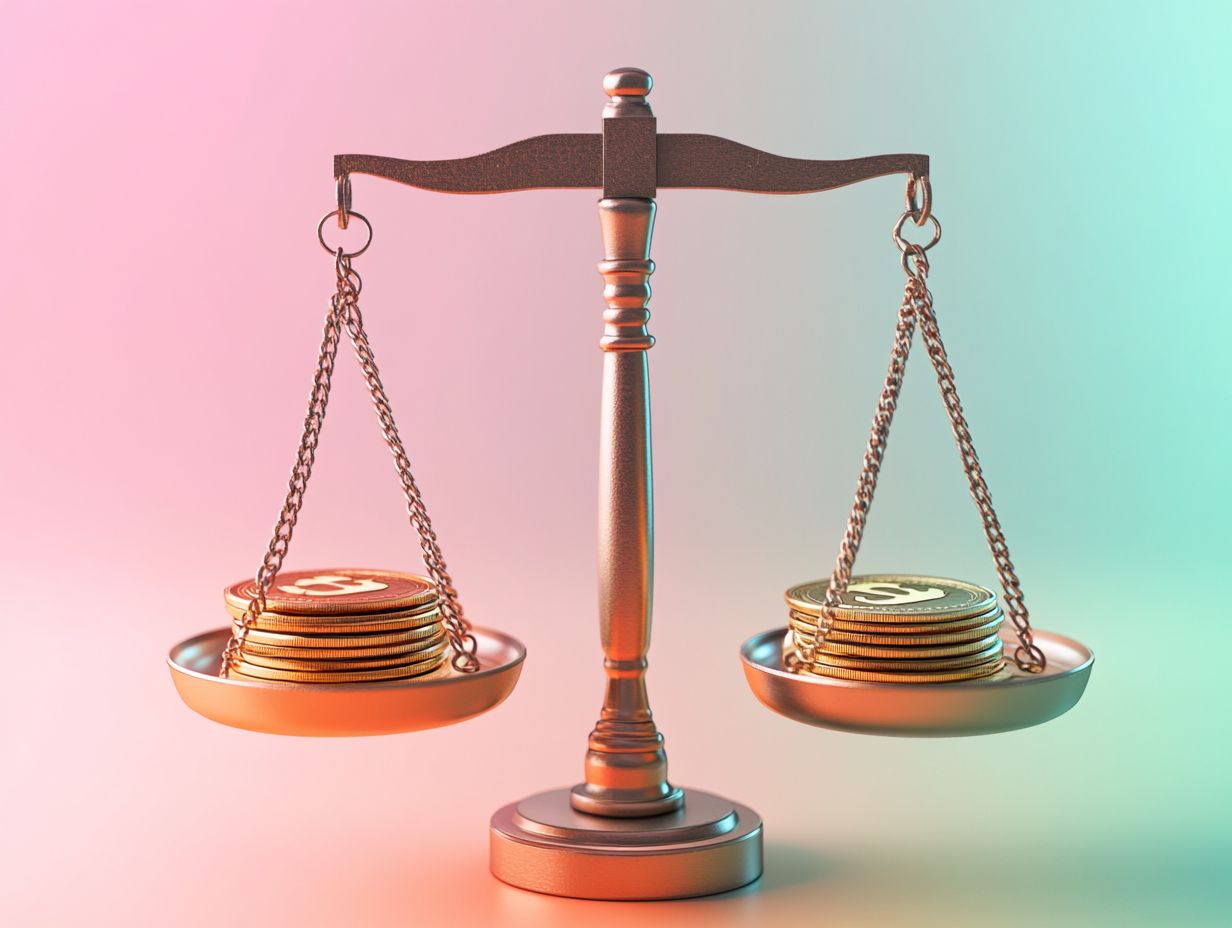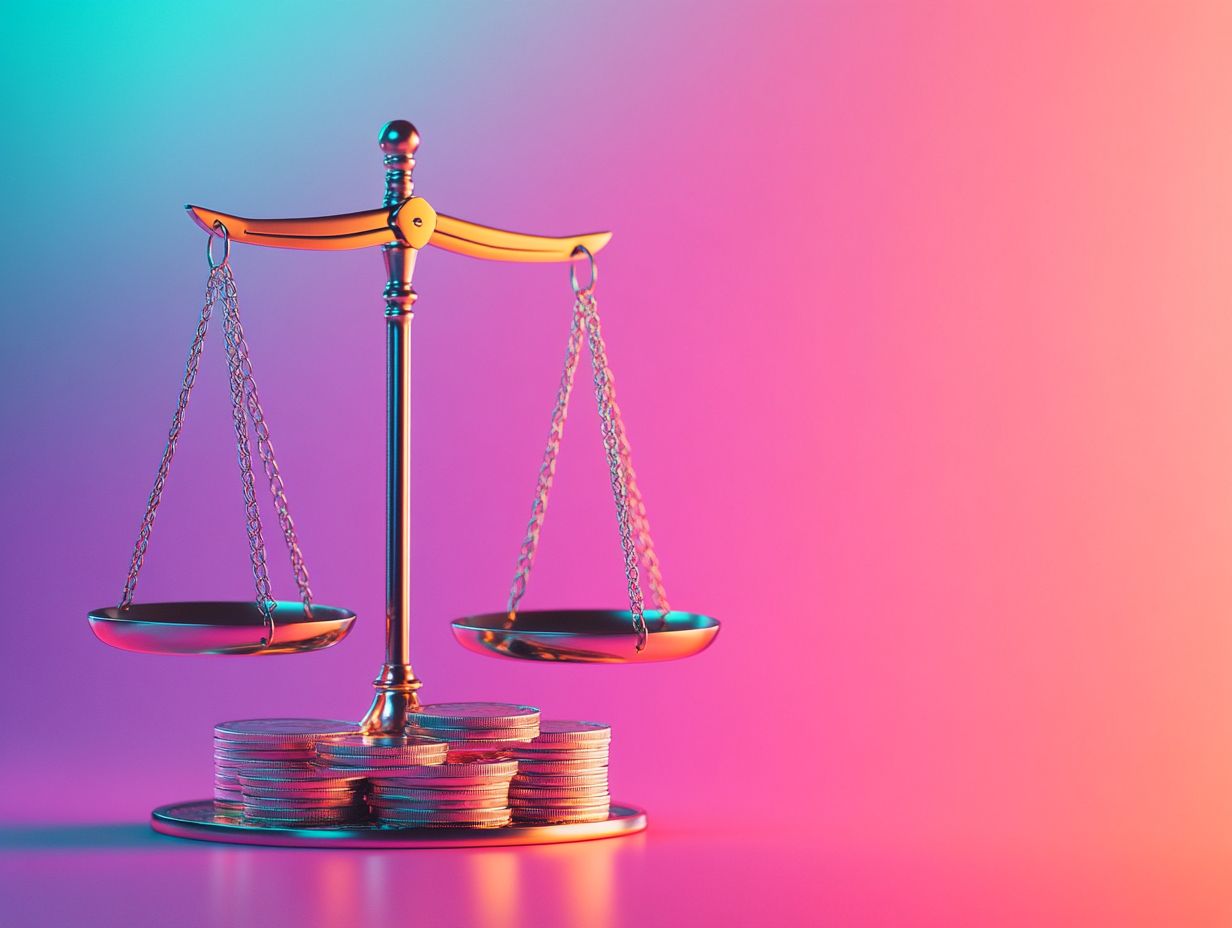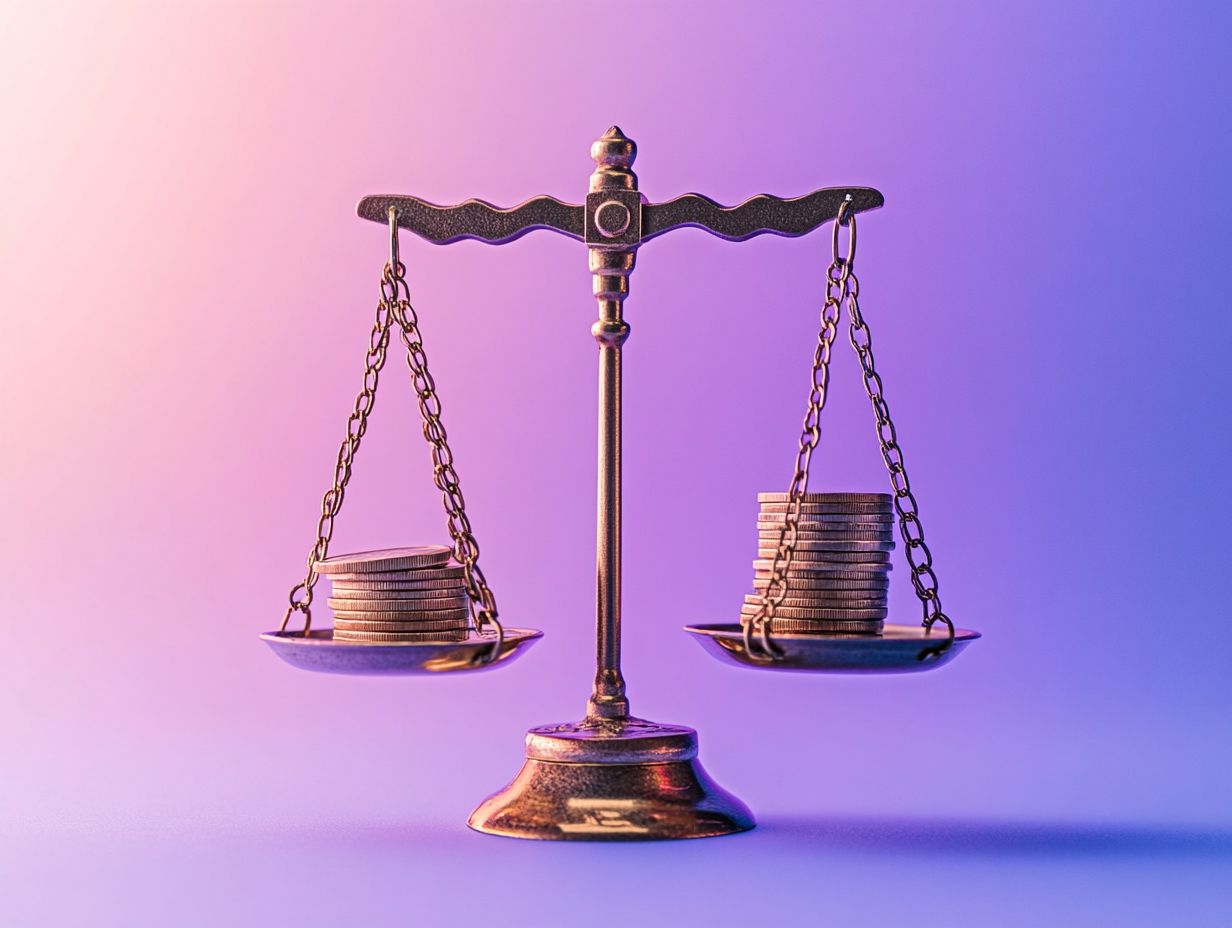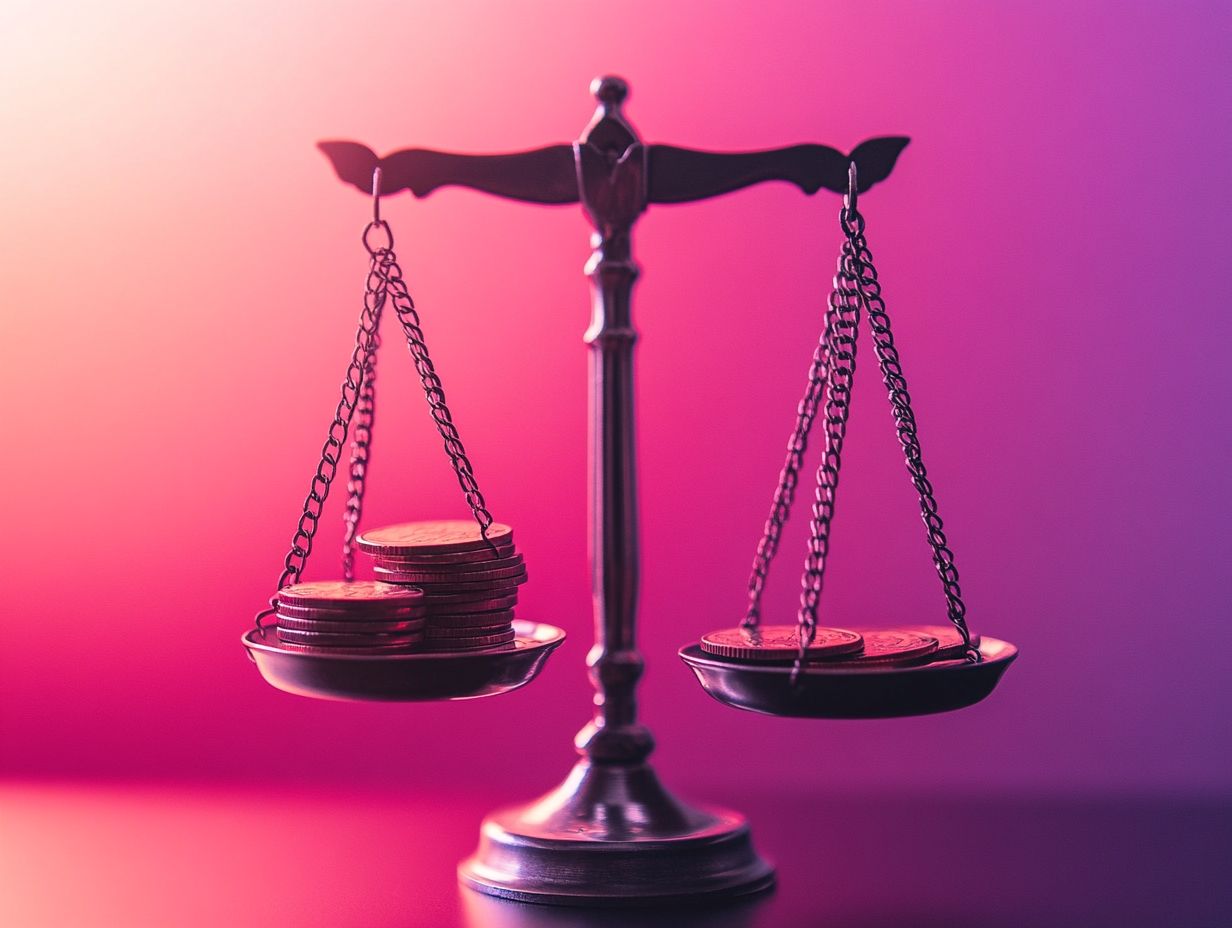What Are the Key Laws on Peer-to-Peer Lending?
Peer-to-peer lending has revolutionized how individuals and businesses access financing, offering a compelling alternative to traditional banking systems.
This sector is growing quickly, making clear regulations essential to protect both borrowers and investors.
Get ready to explore the critical laws governing peer-to-peer lending, emphasizing consumer protection, investor safeguards, and compliance requirements for platforms.
You ll also gain insights into the future of these regulations and how they may evolve over time.
Join in as we unpack the essential components of this dynamic financial landscape.
Contents
- Key Takeaways:
- Regulations and Laws on Peer-to-Peer Lending
- Consumer Protection in Peer-to-Peer Lending
- Investor Protection in Peer-to-Peer Lending
- Compliance and Licensing Requirements
- What Peer-to-Peer Lending Platforms Need to Know
- Future of Peer-to-Peer Lending Laws
- Frequently Asked Questions
- What Are the Key Laws on Peer-to-Peer Lending?
- What is the Securities and Exchange Commission (SEC) and how does it regulate peer-to-peer lending?
- What is the Truth in Lending Act and how does it apply to peer-to-peer lending?
- Are there any restrictions on who can invest in peer-to-peer lending?
- Are there any state-specific laws that govern peer-to-peer lending?
- How Does the Consumer Financial Protection Bureau (CFPB) Regulate Peer-to-Peer Lending?
Key Takeaways:

Peer-to-Peer Lending (P2P) connects borrowers and investors directly. It operates under regulations designed to protect all parties involved.
Explanation of Peer-to-Peer Lending
Since 2005, peer-to-peer lending has changed how people access credit by connecting you directly with loan applicants, bypassing traditional financial institutions.
This social lending model has transformed credit access for borrowers while offering investors enticing interest rates, customized risk categories, and diverse borrower profiles.
Through technology, platforms like LendingClub, Prosper, and Kiva have simplified loan origination and servicing, fostering financial inclusion in both developed and developing markets.
Unlike traditional banks that often demand extensive documentation, P2P lending platforms use computer programs to assess creditworthiness from various data points, allowing for swifter approvals.
For instance, Funding Circle focuses on small business loans, enabling entrepreneurs like you to secure funding that may be challenging to obtain through conventional channels. Similarly, Upstart evaluates educational backgrounds and work histories to assess risk, catering to younger borrowers.
By offering competitive interest rates, these platforms provide you with more flexible terms and create enhanced investment opportunities for lenders seeking higher returns than typical savings accounts.
This new way of lending helps everyone borrowers get money, and lenders get better returns.
Regulations and Laws on Peer-to-Peer Lending
The regulatory landscape surrounding peer-to-peer lending has seen significant evolution. Financial regulators worldwide are working to establish a balanced framework that safeguards investors while fostering innovation in this rapidly expanding sector.
In the United States and countries like China, the Securities and Exchange Commission (SEC) and the Financial Conduct Authority have enacted laws to oversee P2P platforms. These measures address critical concerns about securities law, investor protection, and compliance, playing a vital role in ensuring the stability of the global peer-to-peer lending market.
Overview of Key Laws and Regulations
The key laws and regulations governing peer-to-peer lending focus on compliance, licensing requirements, and verifying borrower identities. For insights on this evolving sector, consider exploring what is the future of peer-to-peer lending. These measures mitigate platform failures and protect both lenders and borrowers in this innovative financial arena.
These regulations create a secure framework that deters fraud and ensures platforms operate within established legal boundaries. In most jurisdictions, platforms must obtain specific licenses that align with financial service regulations, enabling authorities to monitor activities and uphold consumer protection standards.
For example, the high-profile collapses of certain peer-to-peer platforms have prompted regulatory agencies to implement stricter guidelines. These updates enhance transparency in lending practices and enforce rigorous borrower verification processes. As a result, these measures bolster user confidence, safeguarding their investments while fostering a sustainable lending ecosystem.
Understanding these regulations empowers you to make informed financial decisions.
Consumer Protection in Peer-to-Peer Lending

Consumer protection in peer-to-peer lending is crucial for creating a trustworthy environment. This allows you, as a borrower, to secure funds while lenders can invest with confidence.
It emphasizes fair practices and transparency throughout the lending process. As the market evolves, platforms are focusing more on safeguarding your interests.
Platforms offer tools to compare interest rates and explain the risks of borrower defaults clearly. By implementing effective consumer protection strategies, these platforms enhance your experience as a borrower, strengthen investor trust, and encourage greater participation.
Ensuring Fair Practices and Transparency
Ensuring fair practices and transparency in peer-to-peer lending platforms is essential for building trust among users. This lays the groundwork for ethical lending and responsible borrowing.
As a user, you ll notice that many platforms are increasingly implementing strict compliance measures to verify borrower profiles. This helps assess risk accurately and protects both lenders and borrowers from potential pitfalls.
Many leading platforms now use advanced algorithms and machine learning to assess how likely borrowers are to pay back loans. This significantly reduces fraud risks.
By requiring detailed documentation and thorough background checks, platforms can gauge the risk of each lending transaction more effectively. This proactive approach not only aligns with regulatory requirements but also mitigates potential losses, ultimately fostering your confidence in the system.
As more platforms adopt these practices, you ll find a growing sense of security in the peer-to-peer lending ecosystem. This encourages more individuals to participate, fueling growth and innovation in the space.
Investor Protection in Peer-to-Peer Lending
Investor protection in peer-to-peer lending is crucial for attracting and retaining individual lenders. It emphasizes minimizing risks while ensuring competitive returns on investments.
As you navigate the evolving P2P lending landscape, seek out platforms that actively implement strategies to lower default rates and boost investor confidence.
This approach not only creates lucrative investment opportunities but also balances risk and return, which is key to sustainable growth in the peer-to-peer lending market.
Minimizing Risks and Ensuring Returns
Minimizing risks while maximizing returns in peer-to-peer lending requires you to analyze borrower profiles and risk categories carefully. Effective loan servicing throughout the lending cycle is also essential.
Dig into the credit histories and financial stability of potential borrowers, using data analysis tools to assess risk accurately. Understanding various borrower segments lets you categorize loans effectively, creating a diversified portfolio that buffers against default risks.
The importance of efficient loan servicing cannot be overstated; it ensures timely payments and fosters clear communication between you and the borrowers. This is critical for maintaining loan performance.
By implementing these targeted strategies, you can significantly enhance your chances of achieving consistent and favorable returns, even amid the uncertainties of the lending landscape.
Compliance and Licensing Requirements

Understanding compliance and licensing requirements for peer-to-peer lending platforms is vital for upholding industry integrity. It ensures that borrower identities are accurately verified.
As regulatory frameworks evolve, it s essential for you to stay informed about the latest compliance mandates and licensing obligations. This knowledge empowers you to operate effectively while safeguarding the interests of both borrowers and investors.
What Peer-to-Peer Lending Platforms Need to Know
To thrive in the competitive landscape of alternative financing, you must grasp essential factors such as following the rules, licensing requirements, and borrower identity verification. These elements are foundational to your success.
Ensuring adherence to all regulatory requirements is vital for building trust and credibility with both lenders and borrowers. Proper licensing safeguards your operations and protects consumers from potential fraud, creating a secure atmosphere for all parties involved.
Verifying borrower identities is crucial in minimizing risks for lenders, contributing to a safer lending environment overall. Consider how transaction fees shape the overall experience; high fees might discourage borrowers from seeking loans while affecting the returns lenders expect from their investments.
Balancing these fees is key to maintaining a healthy ecosystem for everyone involved.
Future of Peer-to-Peer Lending Laws
The future of peer-to-peer lending laws presents a dynamic landscape poised to evolve in response to emerging trends, regulatory challenges, and the need for financial stability within the global market.
As innovation continues to shape the P2P lending sector, you, as both a regulator and a platform operator, must adapt to these new developments. This adaptability will protect investors and enhance access to credit for borrowers, striking a balance essential for the sector’s growth.
Predictions and Possible Changes in Regulations
Predictions about changes in peer-to-peer lending regulations indicate a trend toward greater oversight from financial institutions, alongside increased scrutiny of crowdfunding practices. This aims to ensure both investor protection and borrower rights.
As the sector matures, authorities will likely introduce more stringent compliance requirements. You can expect enhanced disclosure initiatives and thorough risk assessments designed to protect both investors and borrowers.
These anticipated changes could pave the way for standardized practices across platforms, making the investment process clearer and more predictable. For borrowers, this shift could create a more transparent lending environment, potentially lowering costs and broadening access to credit.
However, heightened regulation may also present challenges, such as increased fees and restrictions that could impact the fluidity of the P2P lending ecosystem.
Frequently Asked Questions

What Are the Key Laws on Peer-to-Peer Lending?
Peer-to-peer lending connects individuals looking to borrow money with investors willing to lend. Here are some commonly asked questions about the key laws governing peer-to-peer lending.
What is the Securities and Exchange Commission (SEC) and how does it regulate peer-to-peer lending?
The Securities and Exchange Commission (SEC) is a government agency that regulates the securities industry, including peer-to-peer lending. It requires all peer-to-peer lending platforms to register with the SEC and follow their regulations, providing investors with essential information about the loans they are investing in.
What is the Truth in Lending Act and how does it apply to peer-to-peer lending?
The Truth in Lending Act (TILA) is a federal law that requires lenders to disclose loan terms, including the annual percentage rate (APR), to borrowers. This law also applies to peer-to-peer lending platforms, which must provide clear and accurate information about their loans.
Are there any restrictions on who can invest in peer-to-peer lending?
Yes, there are restrictions on who can invest in peer-to-peer lending. In the United States, only accredited investors those who meet specific income and net worth requirements are allowed to invest. This protects less experienced investors from potentially risky investments.
Are there any state-specific laws that govern peer-to-peer lending?
Yes, in addition to federal laws, state-specific laws govern peer-to-peer lending. Each state has its own regulations and licensing requirements for peer-to-peer lending platforms, so it s important to research the laws in your state before participating.
How Does the Consumer Financial Protection Bureau (CFPB) Regulate Peer-to-Peer Lending?
The Consumer Financial Protection Bureau (CFPB) is a government agency dedicated to protecting consumers. They focus on unfair or misleading actions by financial institutions, including peer-to-peer lending platforms.
Peer-to-peer lending allows individuals to borrow and lend money directly from each other. The CFPB plays a vital role in keeping this industry fair and safe for everyone! They monitor the sector, enforce relevant laws, and address consumer complaints to ensure a positive experience.






